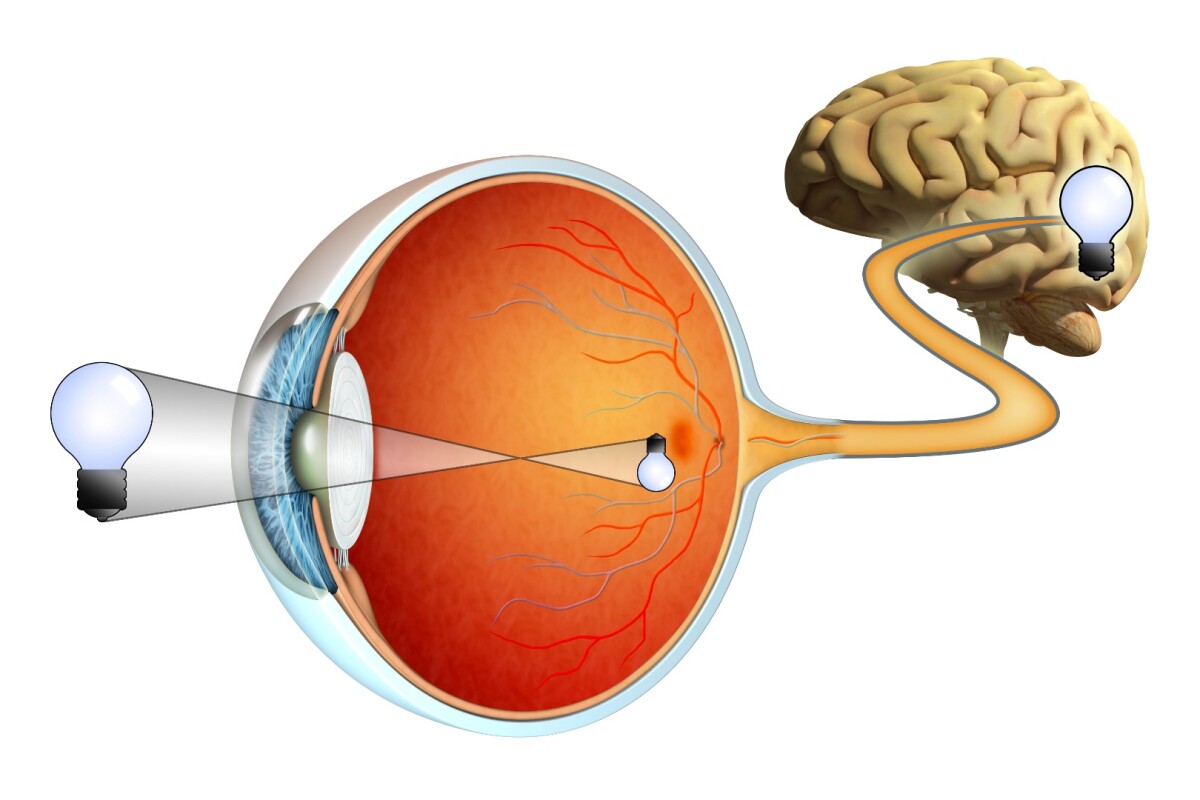
The light-sensitive nerve layer that lines the inside of the back of the eye. The lining of the back of eye containing two types of light receptor cells (rods and cones).Ĭontains the light receptors, which trigger electrical impulses to be sent to the brain when light is detected. The opening in the middle of the iris through which light passes to the back of the eye. Slacken or stretch as the ciliary muscles contract or relax, to adjust the thickness and curvature of the lens. But light does not impinge on the retina unaltered. The photoreceptive cells of the eye, where transduction of light to nervous impulses occurs, are located in the retina (shown in Figure 1) on the inner surface of the back of the eye. Muscles connected to the lens by suspensory ligaments.Īdjust the shape of the lens to make it more or less curved, so as to increase or decrease the refraction of light.Ĭonnect the ciliary muscles to the lens and hold the lens in place. The human eye is an organ that reacts with light and allows light perception, color vision, and depth perception. The amount of refraction can be adjusted by altering the thickness and curvature of the lens. Refracts light to focus it onto the retina. It is attached to the ciliary muscles by the suspensory ligaments. Transparent, bi-convex, flexible disc behind the iris. These relax or contract to adjust the size of the pupil.Ĭontrols how much light enters the pupil.Īllows light to pass through as it enters the eye. Refracts light as it enters the eye (by a fixed amount).Ĭoloured part of the eye that contains muscles.

Tough, transparent covering over the front part of the eye. The optic nerve carries the impulses to the brain, which processes the signals and produces the image. There are a range of tissues in the eye that work together to allow it to carry out its function. The retina converts the light signal into electrical impulses.

The eye is a sense organ containing receptors sensitive to light intensity and colour.
RETINA FUNCTION EYE SKIN
Skin that covers the lower part of the eyeball, including the cornea, when closed. The transparent structure inside the eye that focuses light rays onto the retina.

Greg Foot demonstrates how the eye works and what happens if someone is long- or short-sighted The iris is partly responsible for regulating the amount of light permitted to enter the eye.


 0 kommentar(er)
0 kommentar(er)
